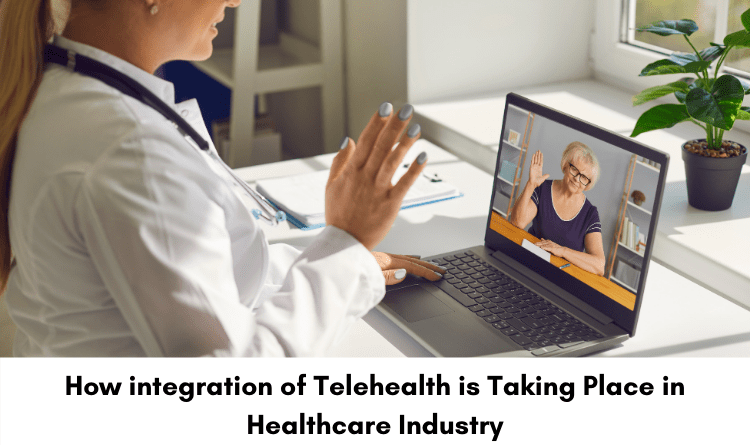How integration of telehealth is taking place in healthcare industry
Telehealth and telemedicine have undoubtedly revolutionized the healthcare industry. Let us take a closer look at how that has happened.
What is telehealth?
Now the question comes what is telehealth? Telehealth is the use of digital information and communication technologies, such as computers and mobile devices, to access health care services remotely, and manage your health care. It allows long-distance patients and clinician contact, care, advice, reminders, education, intervention, monitoring, and remote admissions.
What is telemedicine?
Again, people confused what is telemedicine? Telemedicine is a subset of telehealth. It specifically refers to the clinical healthcare that’s offered to patients remotely.
Integration of telehealth in the healthcare industry
Over the years, healthcare centers have adopted telehealth into their structures to revolutionize the way the healthcare industry works.
- Remote patient monitoring (RPM)
Often abbreviated as RPM (and sometimes known as remote patient management), remote patient monitoring is a method of healthcare delivery that uses the latest advances in information technology to gather patient data, outside of traditional healthcare settings. Therefore, RPM is a type of telehealth delivery system. A variety of technologies enable your doctor or healthcare team to monitor your health remotely. These technologies include:
- Web portals, or mobile apps for uploading critical information, like blood glucose readings, to your health care team
- Devices that measure, and wirelessly transmit information, such as blood pressure, blood glucose or lung function
- Wearable devices and sensors that give out an emergency notification for when a patient’s oxygen levels go low, or their blood pressure falls
- Home monitoring devices for older people, or people with dementia that detect changes in normal activities such as falls
This data-driven decision-making has proved to be beneficial in meeting patient’s needs. Patients are also less stressed now, as they are assured that someone is always keeping an eye on their hour-to-hour health developments. Patients can also easily provide feedback that can further help the healthcare personnel to act accordingly.
- Virtual doctors’ meet
In a world prior to telehealth, oftentimes, different doctors tending to a single patient would have problems managing time to meet each other. With the adoption of telehealth, primary caregivers can now have on-demand contact with specialists. This significantly improves the quality of health care, and thus, public health as a whole.
Read Also: PrimeShred Review
- Personal health records
An electronic personal health record (PHR) system is a collection of information about one’s health that an individual can control and maintain. A PHR app is accessible to you anytime via a web-enabled device, such as your computer, laptop, tablet or smartphone.
In case of an emergency, a personal health record can quickly give emergency personnel vital information, such as current diagnoses, medications, drug allergies and your doctor’s contact information. This can definitely elevate the quality of primary care that is provided.
- Personal health apps / Mobile health communication (mHealth)
The World Health Organization has defined mHealth as the “use of mobile and wireless technologies to support the achievement of health objectives”. mHealth has been used by doctors and hospital staff to educate patients about medicines, and it has also helped doctors to monitor emergency situations on-the-go. It has also helped in spreading awareness, and educating medical personnel in rural, inaccessible areas, to help them become more efficient at their jobs. - Telepharmacy
Telepharmacy is the delivery of pharmaceutical care via telecommunications to patients in locations where they may not have direct contact with a pharmacist.
Now, you no longer have to worry about your finances during your health emergencies. The Bajaj Finserv Digital Health EMI Network Card lets you pay the bills of your visits to the doctor in easy instalments. The card also covers a wide range of treatments; from dental care and eye care, to maternity care and cosmetic and plastic surgeries among others.
Look at Some Other Terms: day2news and mightynews


